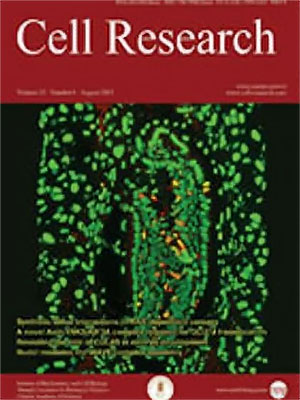
Volume 15, No 8, Aug 2005
ISSN: 1001-0602
EISSN: 1748-7838 2018
impact factor 17.848*
(Clarivate Analytics, 2019)
Volume 15 Issue 8, August 2005: 593-603
ORIGINAL ARTICLES
OsWRKY03, a rice transcriptional activator that functions in defense signaling pathway upstream of OsNPR1
Xiao Qiang LIU1,2, Xian Quan BAI1,2, Qian QIAN3, Xiu Jie WANG1, Ming Sheng CHEN1, Cheng Cai CHU1,*
1National Key Laboratory of Plant Genomics, Institute of Genetics and Developmental Biology, Chinese Academy of Sciences,
Beijing 100101, China
2Graduate School of the Chinese Academy of Sciences, Yuquan Road, Beijing 100039, China
3China National Rice Research Institute, Chinese Academy of Agricultural Sciences, Hangzhou 310006, China
Correspondence: Chengcai Chu(ccchu@genetics.ac.cn)
WRKY family proteins are a class of plant specific transcription factors that involve in many stress response pathways. It has been shown that one Arabidopsis WRKY protein, AtWRKY29/22, is activated by MAP kinase signaling cascade and confers resistance to both bacterial and fungal pathogens. However, little is known about the biological roles of WRKY proteins in rice. In this study, we investigated the expression patterns of rice AtWRKY29/22 homolog, OsWRKY03, under different conditions, and also its possible role involved in plant defense. Our results showed that OsWRKY03 was up-regulated by several defense signaling molecules or different treatments. Further analysis revealed that the expression of OsWRKY03 was light dependent. Transcriptional activation activity of OsWRKY03 was also demonstrated by yeast functional assay. Transient expression of OsWRKY03-GFP fusion protein in onion epidermis cells showed that OsWRKY03 was a nuclear localized protein. OsNPR1 as well as several other pathogenesis-related genes, such as OsPR1b, phenylalanine ammonia-lyase (ZB8) and peroxidase (POX22.3), were induced in OsWRKY03-overexpressing transgenic plants. These results indicated that OsWRKY03 is located upstream of OsNPR1 as a transcriptional activator in salicylic acid (SA)-dependent or jasmonic acid (JA)-dependent defense signaling cascades.
FULL TEXT | PDF
Browse 2240


